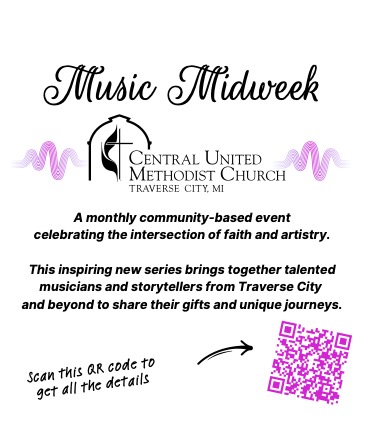
How Will Tourism Affect Traverse City in the Next Decade?
By Beth Milligan | Feb. 22, 2023
With nearly 29 percent of Traverse City’s jobs connected to tourism and Grand Traverse County experiencing a 47 percent population spike between February and July, tourism continues to play a major role in the region – and will likely do so in the coming decade. As the City of Traverse City works to create a new master plan, residents weighed in during two workshops Tuesday with their own impressions of tourism and how Traverse City should best balance visitor impacts with local quality of life.
City staff and representatives from consulting firms Beckett & Raeder and Placecraft held Zoom and in-person meetings Tuesday focused on tourism planning. It’s one of many topics that will be covered in the city’s new master plan, a document that guides long-term city decision-making. Other topics will include demographics, housing, transportation/mobility, infrastructure/energy, natural features, economic development, land use, arts/culture/recreation, health/safety/wellness, and sustainability/resiliency.
Rowan Brady, a Beckett & Raeder representative, explained why tourism is just as important as other topics in planning for Traverse City’s future. “Tourism is interconnected throughout the city and the region,” he said. “If you don't plan for tourism, it can have negative implications on our community.” Brady said the goal was to “talk about how we can plan for tourism that ensures high quality of life for residents, but that does not negatively impact the economic driver that is tourism.”
Brady shared an article published this month by The Guardian about tourism impacts on another vacation destination, Lake Tahoe. In that area – which attracts 15 million visitors annually to a town of just 56,000 residents – median home values have surged from $345,000 in 2012 to $950,000 in 2021. “While I think Lake Tahoe is an extreme example of the dynamics between visitors and locals, it does provide a cautionary tale for what happens when you don't plan for tourism and let the tourist industry dictate community relationships,” he said.
Traverse City’s tourism impact (as measured in the 49684 and 49686 zip codes) is estimated at $2.6 billion annually, according to data shared by Beckett & Raeder. That includes $1.8 billion in direct impact, nearly $650 million in indirect impact, and nearly $150 million in induced impact. Brady explained the differences by using the example of a tourist buying a sandwich at a local shop. The sandwich purchase is a direct impact, the store buying local ingredients to make the sandwich is an indirect impact, and the store worker who later spends their wages in the community is an induced impact. Nearly 29 percent of the economy in the 49684 and 49686 zip codes is tourism-reliant, Brady said, estimating that roughly 50 percent of restaurants and 25 percent of retail stores would close if tourism disappeared.
And while there are other positive impacts of tourism besides jobs – Brady cited community pride, cultural exchanges with outside visitors, and enhanced awareness and protection of natural features, among others – consultants also noted threats. Tourism jobs are typically part-time and low-paying, tourism-driven real estate speculation can warp the housing market, hotels are often owned by international corporations (meaning profits don’t stay in the region), and tourists can “overwhelm and stretch the capacity of infrastructure,” Brady said. He noted that quality of life can “diminish” as locals increasingly “bump up against tourism.”
Brady shared an industry model called the Doxey Irridex Model, which outlines four stages of local response to tourists: euphoria, apathy, annoyance, and antagonism. During one of many interactive live polls that attendees responded to during Tuesday’s Zoom meeting, Brady asked respondents to rate their current feelings about Traverse City tourism using the scale. An overwhelming majority of attendees chose “annoyance,” the third stage defined by phrases like “resident misgivings” and “local protest to tourism power.” In another poll, residents were asked to rank their top priorities in local tourism planning. The answers, ranked from most to least important, were: resident quality of life, economic diversity and stability, environmental stewardship, safe and convenient transportation system, equitable benefits, visitor experience, and celebrating heritage and culture.
Beckett & Raeder shared case studies from other communities across the U.S. that have worked to adopt “sustainable tourism” policies, ranging from Sedona, Arizona to Charleston, South Carolina. While some tools available in other communities aren’t available in Traverse City – for example, tourism or hotel taxes levied on visitors elsewhere to pay for infrastructure or beach clean-up aren’t currently allowed in Michigan – Traverse City can still consider best practices from other areas, consultants said. An industry definition of sustainable tourism shared by Beckett & Raeder says the approach “takes full account of tourism’s current and future economic, social/cultural, and environmental impacts, addressing the needs of visitors, the industry, the environment, and host communities.”
Representatives from the local tourism industry also weighed in Tuesday. During a breakout discussion, in which one resident questioned whether Traverse City is “over-promoting” its tourism and should “scale it back a little bit,” Traverse City Tourism Chief Operating Officer Whitney Waara said she thought there was a “common misconception” among locals about the organization’s focus. “We know we don’t need to promote July and August,” she said, adding that Traverse City Tourism’s aim instead is to generate year-round traffic so “jobs are created that are more sustainable” and businesses are kept busy from November to April. Jonathan Pack, a local hotel operator and Traverse City Tourism board member, echoed those remarks. “I want to not have to fight laying off employees in the off-season,” he said.
National Cherry Festival Executive Director Kat Paye said her organization has embraced a similar model, hosting not just the major July festival but events including the Iceman Cometh in November, Cherry T Ball Drop in December, and Leapin’ Leprechaun 5K in March. “So we're bringing people into the area year-round, hopefully,” she said. Paye noted the Cherry Festival pays upwards of $120,000 annually in fees to the city to host the festival and pays for infrastructure like electrical upgrades to the Open Space and “no smoking” and other signage in city parks – amenities she suggested the city should be responsible for, but which are currently shouldered by event organizers. Paye said the festival’s goal is to “create economic drivers for the community that are sustainable without overdoing it.”
Following Tuesday’s Zoom meeting, City Planning Director Shawn Winter said Paye raised “a valid point” about the balance of responsibility between the tourism industry and the city in addressing infrastructure. Reiterating that tourism is a “huge part of our economy,” Winter said that wrestling with its “potential to have a major impact" in the coming years is important to shaping the master plan. Consultants are expected to compile a report from Tuesday’s feedback, Winter said, which will ultimately shape the tourism planning chapter in the draft master plan set to be unveiled later this year.
Comment






